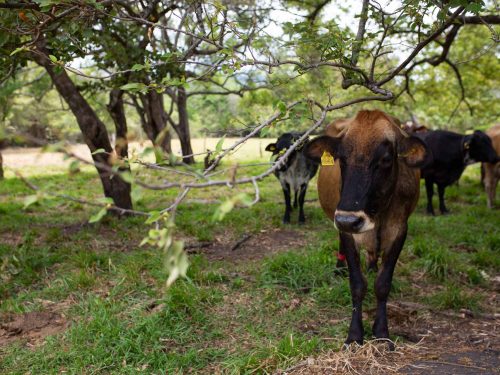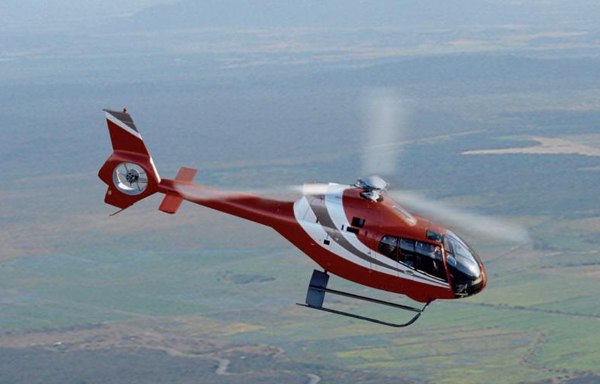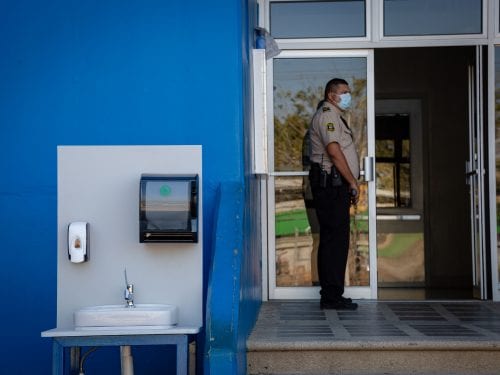
In the distance a power saw whirs, then a hammer pounds. The howler monkey they call Ronny doesn’t even blink now when he hears them. For two years, he has lived inside the Nosara animal shelter and has gotten used to the new sounds of the forest. Ronny bit a cable that disfigured half of his face.
Scientists call the ability of living beings to survive changes and recover without losing what characterizes them “resilience.” Several of the Nosara animal shelter’s howler monkeys are a living example of this new concept: they survived an electric shock, managed to adapt to losing a leg or an eye, and some day— maybe— they will return to their natural habitat.
The ecosystems of Nosara and other areas of our province have also managed to be, to some extent, resilient. A large part of that resilience comes from human beings. The SIBU wildlife sanctuary and the Nosara Refuge for Wildlife have knocked on doors, sent letters and protested so that the Costa Rican Institute of Electricity and hotel developers commit to protecting the lives of monkeys.
Their efforts were not in vain. There are several examples of hotels and villas on the coast of Nosara that have put their electrical wiring underground so that animals can’t get electrocuted, although this means taking on a much higher cost than having overhead wiring. ICE has protected cables as well as transformers to avoid this problem. Some families who build new houses in the middle of the forest buy electrical insulation.
But all of that is not enough. The problem is always bigger than the solution, those interviewed told us with disappointment. In the last five years, the number of electrocuted animals treated in the Nosara refuge has not been lower than 93 per year, with a maximum of 144 in 2017.
Human beings are a deciding factor in the resilience processes. The sand excavators of the Tempisque River are another example of this: when the rainy season arrives, the National Emergency Commission itself pays them to remove sediment from the river. At the same time, they manage to earn a living that they can’t eke out during the short harvest periods of the region.
Arid areas like Guanacaste often have such examples in agriculture— improved pastures, efficient irrigation— and in livestock— living fences (with trees for posts), mixed land use with trees and grazing areas. Changes sometimes force us to take the lead in resilience.
The level of resilience depends on how prepared the communities are to face the more structural changes, those over which they have little control. Climate change is the fiercest of them, but there are also others that can be considered necessary, such as urban development to bring more jobs, or road construction to increase tourism and connect communities. Therefore, science offers several keys to ensure that the blows are not very strong.
Perhaps the most important of these is the ability to be flexible and diversify the options we have at hand to prevent these changes: in addition to shelters, build wildlife crossings or insulate transformers. In addition, there is an inter-institutional commission (composed of electricity companies, Sinac and Minae) that meets every month to increase prevention actions and the impact of a guide that already exists, and that should be applied to its full extent.
Howler monkeys are an indicator of healthy forests are. Beyond being a tourist attraction, they are often the beginning of a food chain: they eat fruit from the treetops and throw half down, which other animals that cannot climb take advantage of. What they discard also carries seeds that spread new trees throughout the forest.
Protecting them is protecting the jungle, which provides us with clean air, tourism, and refreshing shade on the hottest days (increasingly more frequent and intense), food and scenic beauty. Saving the forest is not optional.








Comments